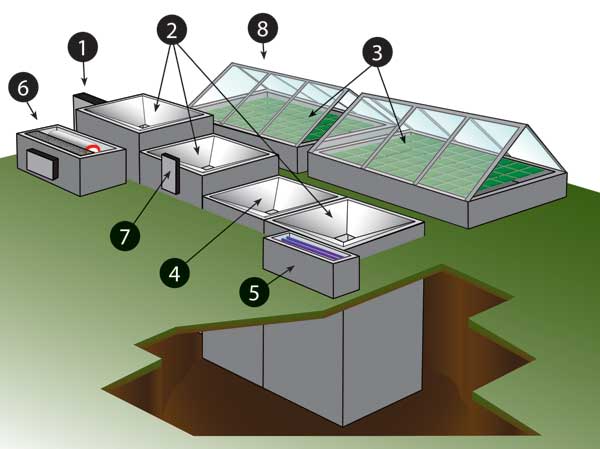Packaged Wastewater Treatment through Algae-Based Technology
Elimination of Greenhouse Gas (GHG) Emissions
Recent studies have shown that conventional wastewater treatment plants account for 3 to 4 percent of all greenhouse gas emissions in the world. RAC-based systems, however, are extremely efficient at capturing CO2Â because they generate a lot of algae, which take up significant amounts of CO2. Unlike other biological processes that emit enormous amounts of CO2, either directly or indirectly through biological processes or energy use, RAC technology enables package plants to have a much smaller greenhouse gas footprint, and to become carbon neutral or even carbon negative. RAC-based systems also converts ammonia directly to plant life, unlike conventional systems that create nitrous oxide (N2O) during nitrification. Scientists have determined that N2O emissions from nitrification/denitrification processes in conventional systems are 300 times more potent as a greenhouse gas than CO2. This is important because greenhouse gases are a significant concern, and because the EPA has specifically identified conventional wastewater treatment plants as major contributors to greenhouse gases.
Typical RAC System Components |
||||||||||||||||
Typical system components include:
 |
||||||||||||||||
Illustration: Oldcastle Precast Inc. |
Â
Nitrogen and Phosphorous Removal
Algae can metabolize sewage far more rapidly than bacterial treatment. Treatment is more complete and more rapid since bacteriological treatment is a process of decay, whereas algae treatment is one of conversion of organic matter to live, healthy plant life. Current bacteriological package treatment plants may discharge nitrates, phosphates, sulfates, etc. into a natural body of water for dilution and continued treatment by naturally occurring plant and animal life. Another common method of discharge for package plants is subsurface discharge to a discharge field or subsurface drip irrigation. It is recognized that nutrients in treated effluent water have increasingly become a problem because they cause an increase in the amount of algae in our lakes and streams. RAC-based technology approaches the desired function of discharging water with only its natural mineral elements because of the productive plant life cycle associated with algae. Nitrates, phosphates and their antecedents are plant foods, and as such, are assimilated by the algae through photosynthesis. A package plant utilizing RAC technology achieves this nutrient-removed, tertiary treatment by virtue of the natural growth process of algae.









